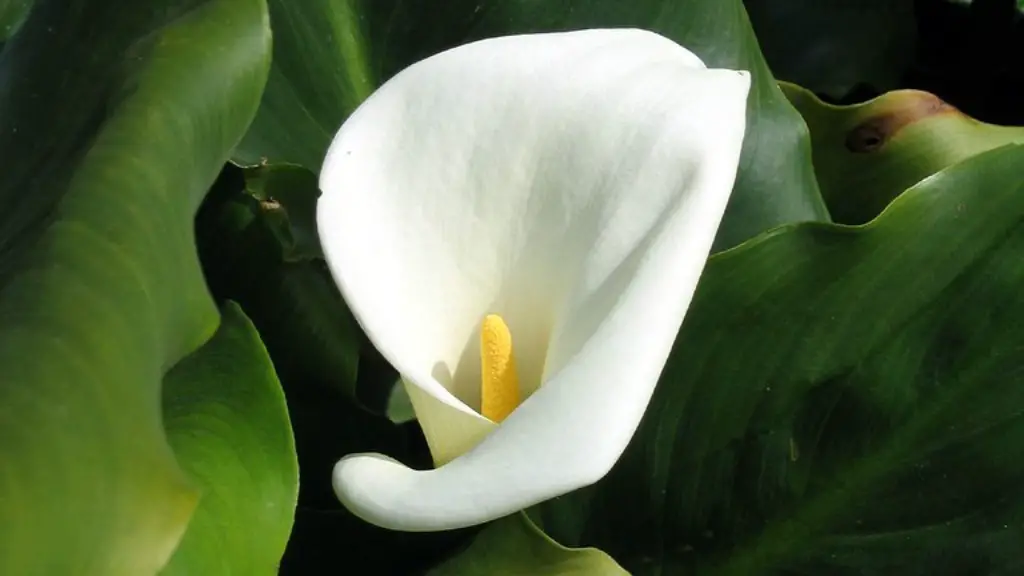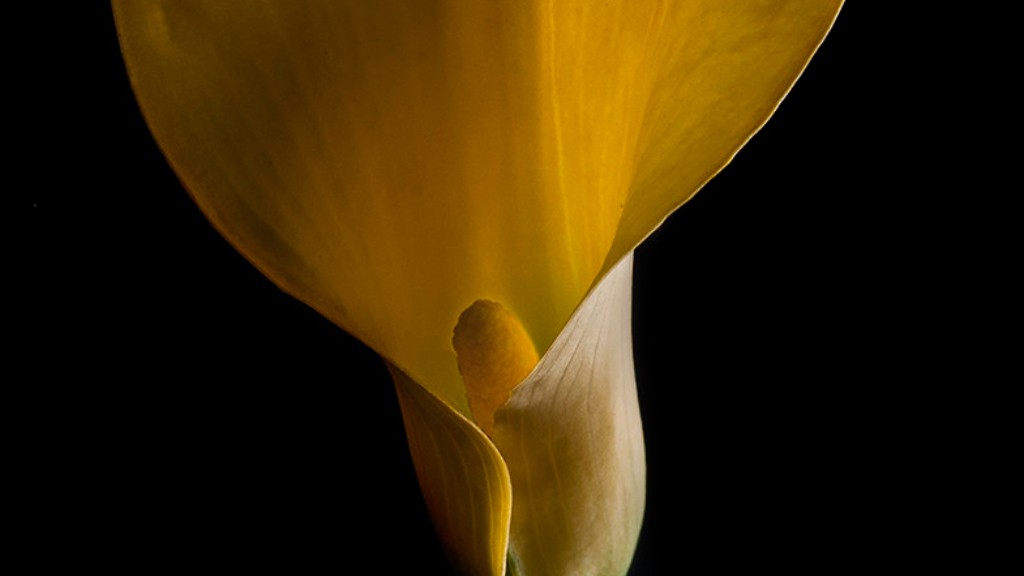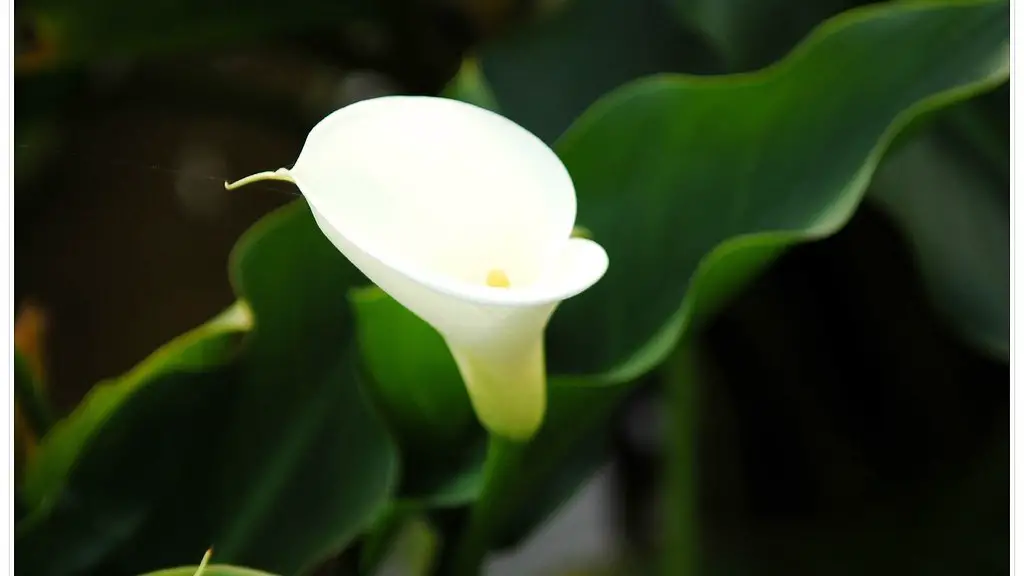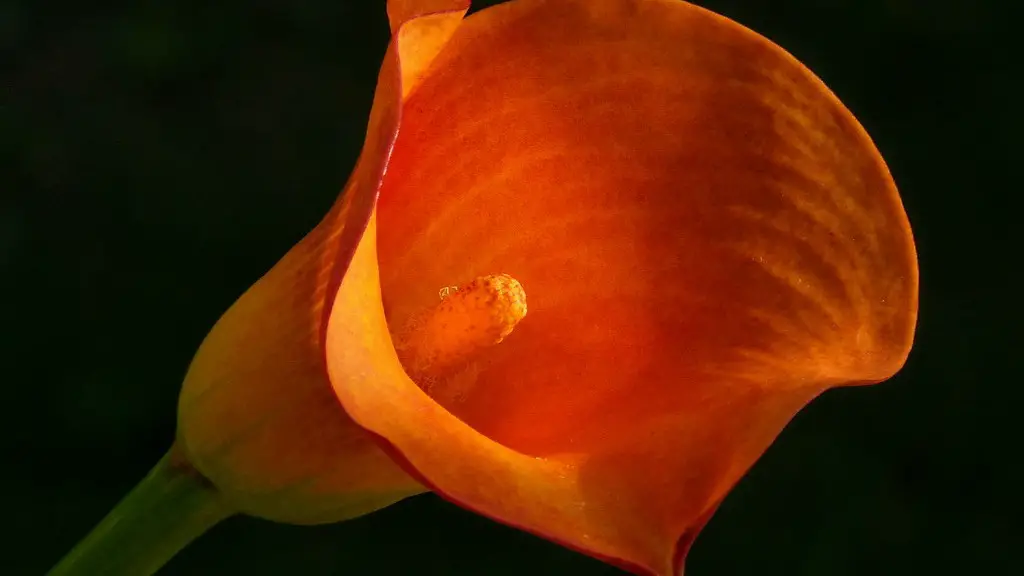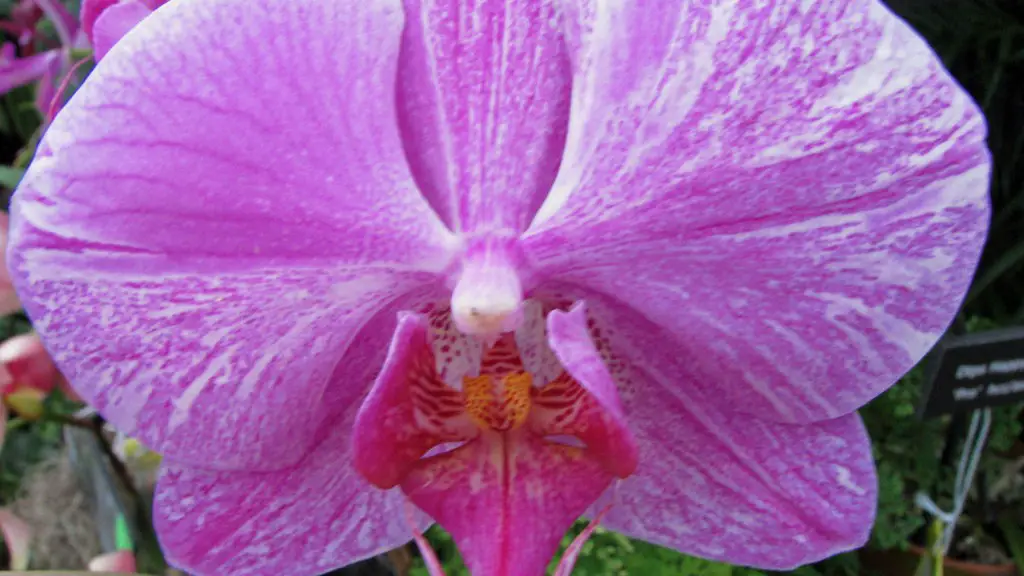A calla lily is a beautiful flower that can brighten up any outdoor space. Though they are lovely, they can be a bit delicate. Here are a few tips on how to care for a calla lily outdoors:
-Place the calla lily in an area that gets plenty of sunlight.
-Make sure the soil is well-draining. Calla lilies do not like to sit in wet soil.
-Fertilize the plant regularly. Calla lilies appreciate a good feeding.
-Deadhead the flowers as they fade. This will encourage the plant to produce more blooms.
With a little care, calla lilies can make a beautiful addition to your garden.
Assuming you are in a temperate climate, here are some tips for growing and caring for calla lilies outdoors:
-Choose a location in your garden that gets partial sun to full sun.
-Prepare the soil by loosening it and adding some compost or other organic matter.
-Dig a hole that is big enough to accommodate the roots of the plant.
-Plant the calla lily at the same depth it was growing in the pot.
-Water thoroughly.
-Apply a thin layer of mulch over the soil to help retain moisture.
-Calla lilies typically bloom in the summer.
-After the blooms fade, cut back the foliage to the ground.
Do calla lilies come back every year?
If you have a potted calla lily, you can actually save it and it will bloom again next year. Many people treat their calla lilies as annuals, but they are actually perennials. So, if you have one, don’t toss it out when the blooms are done. Instead, keep it and it will bloom again.
Callas make great houseplants and can be grown all year round. They can also be grown as summer annuals in outdoor pots or in the ground. However, they will need to be dug up and stored indoors over winter if you want to keep them for another year.
Do calla lilies do better inside or outside
Although they are typically an outdoor plant, Calla Lilies can do well indoors if you pay attention to their growing conditions. They originate from southern Africa, so they need warm temperatures and bright, indirect light. Keep the soil moist but not soggy, and fertilize monthly. With a little care, your Calla Lily can thrive indoors.
If you live in an area with freezing weather, it’s important to bring your potted calla lilies indoors before the cold arrives. These tropical plants can overwinter outdoors in zones 8 to 10, but they will be damaged or killed in temperatures below 25°F. Put the pots in a sunny window to continue growing, or dig up the rhizomes and store them indoors.
How long do calla lilies last outside?
Calla lilies are beautiful flowers that can last for many years. Most calla lilies go dormant in the fall and come back in the spring. Calla lilies bloom from 6 to 12 weeks in late spring and throughout the summer, depending on geographic location and calla lily variety.
Calla lilies are tender perennials that need to be dug up and stored indoors over winter. After a killing frost, cut off the foliage 1-2 inches above the soil surface.
What do you do with outdoor calla lilies after they bloom?
It’s important to reduce watering after your Calla Lilies have finished blooming for the season and the leaves start to turn yellow. Once the foliage dies back completely, cut it down to the ground and dig up your rhizomes. Clean them off with water and let them air dry for at least 12 hours.
This is a hot pink calla lily and it can last up to 12 weeks. Keep the plant pots tight to encourage more blooms. The deep crimson spathes give a border, pot, or indoor decor an elegant look. The flowers are long lasting in a cut bouquet.
How do you keep calla lilies blooming
If you want your calla lilies to bloom and look healthy, you need to water them regularly. Lack of water will cause the leaves to turn yellow and the plant to look stunted. sunlight is also important for the plant to grow.
Calla lily deadheading is a process of removing spent flowers from the plant. This is important for two reasons: it allows the plant to focus its resources on growing large, healthy rhizomes, and it prevents the formation of seed pods, which can use up valuable resources.
Do calla lilies survive in pots?
If you’re looking for a striking addition to your porch or patio, consider adding a pot or planter with calla lilies. These beautiful flowers will last for several weeks and really make a statement. Just be sure to give them room to grow – they don’t do well when crowded.
While the calla lily thrives in moist soil, oversaturation may cause limp stems and root rotting. Causative factors include excessive rainfall, poor drainage, and overwatering. If you find your lilies sitting in puddles or with mushrooms growing beside them, it’s likely that the soil is compacted and draining poorly.
Do calla lily bulbs multiply
Calla lily bulbs are very easy to spread and multiply. They can be dug up and replanted in different locations with ease. While they do spread, it is very easy to control their growth.
Cannas are a tropical plant, so they need a warmer climate to overwinter. You can overwinter cannas in pots by cutting the foliage back to the soil level and moving them indoors. Stop watering the plant, and keep it in a cool and dry location that doesn’t fall below 40°F.
How do you keep calla lily bulbs over winter?
When storing calla lily bulbs, make sure to keep them in a cool spot. If they are stored in a warm spot, they will rot. The best way to store them is in a paper bag or in layers in a cardboard box.
If the leaves on your calla lily plant have very dark tips, it’s a sign that you’re fertilizing it too much. Cut back on the fertilizer and add coffee grounds between fertilizing rounds to encourage growth. Calla lilies like acidic soil and coffee grounds will help create that acidic environment.
What months do calla lilies bloom
Calla Lilies are beautiful flowers that can be enjoyed indoors or outdoors. If you plan to transfer them indoors, do so at the first freeze. They can be replanted outdoors each spring. If you leave them in the ground, they will die when frozen. The flowers bloom in the late spring and throughout the summer.
If you notice your calla lily plant drooping, it is likely due to either underwatering or overwatering. When a calla lily is underwatered, the heavy flower may droop. If the plant is overwatered, this can also cause the flower to droop as well as lead to a fungal rot disease. To prevent either of these problems, be sure to water your calla lily plant regularly and keep an eye on the soil to make sure it is not too wet or too dry.
Final Words
1. Calla lilies can be planted outdoors in USDA hardiness zones 8-10.
2. They prefer well-drained soil that is slightly acidic.
3. Calla lilies need full sun to partial shade.
4. Water the plant deeply and regularly during the growing season.
5. Fertilize the plant monthly with a balanced fertilizer.
6. Calla lilies can be left in the ground over winter, but they may need to be mulched heavily in areas that experience freezes.
From seed to blooming plant, calla lilies are relatively easy to care for. These beautiful flowers are commonly found in bouquets and floral arrangements. But did you know that you can grow your own calla lily outdoors? With a little TLC, you can have these lovely blooms in your own garden! Here are a few tips on how to care for calla lilies outdoors:
Sow calla lily seeds in late winter or early spring. Use a peat-based potting mix and sow the seeds about ¼ inch deep. Keep the soil moist but not soggy, and wait for the seeds to germinate. This can take anywhere from 2 to 4 weeks.
Once the seedlings have sprouted, thin them out so that only the strongest plants remain. Transplant the seedlings into individual pots filled with a well-draining potting mix. Water regularly, and fertilize every 2 to 4 weeks.
Calla lilies prefer full sun, but will tolerate partial shade. When the plants are about 6 inches tall, carefully transplant them into your garden. Space the plants about 12 inches apart. Water regularly, and fertilize every 2 to 4 weeks.
In late
